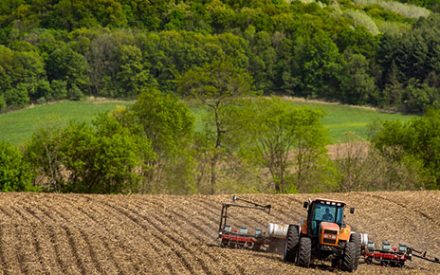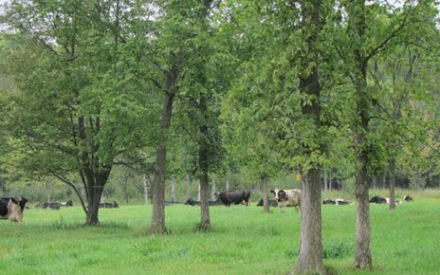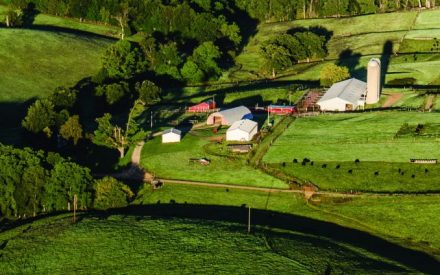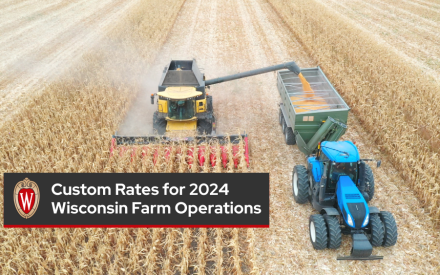This provides a summary of what is covered in the full-text publication, “Rental Agreements for Farm Buildings and Livestock Facilities” located in the AgLease 101 document library Aglease101.org – a publication to help operators and landowners develop equitable rental arrangements and assist them in making sound decisions based on an equitable evaluation of resources.
This article summarizes the major considerations in developing rental agreements for crop and livestock buildings and facilities from both the owner’s and operator’s points of view. Details of the three different approaches to determining a cash rental rate presented and a sample lease form can be found at AgLease101.org
Establishing a Rental Rate
A common or typical rental rate for a particular building or piece of equipment seldom exists. In many areas there is no widespread market for specialized livestock buildings. The factors surrounding each individual case and the bargaining position of each of the parties involved will determine the final rental rate. At a minimum the rental rate should cover any added costs related to the use of the facility. These variable costs include use-related repair and maintenance costs, utilities expense and additional wear and tear.
Most of the owner’s costs will remain the same regardless of how much the asset is used. These costs are usually called ownership or fixed costs, and include depreciation due to age, interest (return on investment), property taxes, insurance and certain repair and maintenance costs not related to use. Therefore, estimating the total of the owner’s costs for the item rented can provide a starting point for negotiating a rental rate.
An AgLease101 worksheet can help estimate factors impacting the owner’s costs including current value, annual depreciation, interest, insurance and maintenance, and operating costs.
Keep in mind that many structures may not attract sufficient rent to pay for all ownership and operating costs, due to their fixed location or a low demand for their services. However, rental rates should at least cover operating costs and added wear to make it worthwhile for the owner to enter into a lease. Thus, the operating (variable) costs is often viewed as a lower bound when negotiating rent.
Special Considerations
Several areas of responsibility need to be discussed and agreed on before the leasing period begins. How these are handled may affect the amount of rent that is ultimately paid for the facilities. View the full-text publication for details of a few common areas for consideration including:
- Repairs
- Water
- Manure management
- Insurance
- Time and basis of payment
The importance of putting the agreement in writing
The details of how the rent will be determined should be clearly specified in a written lease agreement. Including one or two examples with different prices and yields is helpful, as well. Advantages of a written agreement are:
- Encourages a detailed discussion of the agreement, leading to better understanding by both parties.
- Serves as a reminder of the items originally agreed upon.
- Provides a valuable guide for the heirs if either the operator or landowner dies.
Leasing Ag Facilities
Part 3 of 5 of the Agriculture Leases video series
This video is part of a series that includes an example dialog between land/farm owner and renter as they negotiate the specific details of a lease agreement, highlighting important resources, tools and considerations to inform a resilient and robust agreement that serves both parties as well as discussing specific leasing topics.
▶ Watch: Pasture Leases including Grazing of Cornstalks
▶ Watch: Flexible vs. Cash Leases
▶ Watch: Small Acreage and Long-term Investments on Leased Land


 Fixed and Flexible Cash Rental Arrangements for Your Farm - AgLease 101 publication brief summary
Fixed and Flexible Cash Rental Arrangements for Your Farm - AgLease 101 publication brief summary Pasture Rental Arrangement for Your Farm - AgLease 101 publication brief summary
Pasture Rental Arrangement for Your Farm - AgLease 101 publication brief summary Crop Share Rental Arrangements for your Farm – AgLease 101 publication brief summary
Crop Share Rental Arrangements for your Farm – AgLease 101 publication brief summary Custom Rates for 2024 Wisconsin Farm Operations
Custom Rates for 2024 Wisconsin Farm Operations


